21 Blackrock Castle & Cobh
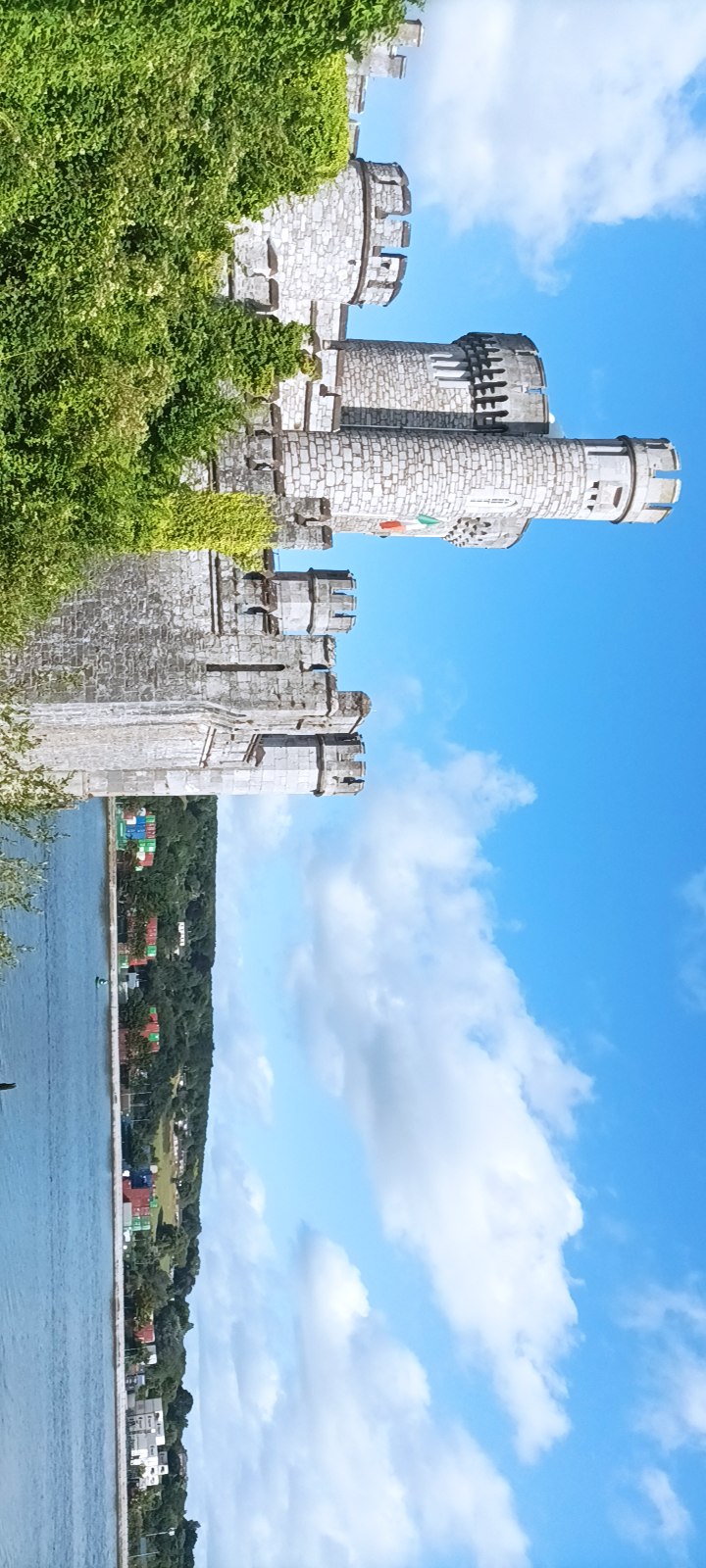
21.0.1 Quarter circle
Today’s journey has a sense of finality and symmetry, with my first book of journeys ending in Cork City, the wetter, mellower little sibling city to Dublin where my staccato odyssey began. Last night’s drive down was a nostalgic, visual recap of so many places I’ve been to along the southern coast. Waterford. Dungarvan. Youghal. Each trip seems so vivid in my memory, between grinding my pedals and then the longslow distillation of memory into words. And yet whizzing by in a car has reminded me of so much I have forgotten. Deleted scenes. Unremembered bends on the road. A gloaming view of Dungarvan Bay in all its glory. The sun set slowly in front of me along the N25 and a crescent moon popped up beside it. I’m just looking at in and thinking that my newishfound appreciation of the sky barely existed until it started screaming at me from behind lighthouses.
21.0.2 Bed beds
I got in to Cork City at like half ten last night, parked up outside St Patrick’s Church, and then kipped in a dorm room in Sheila’s Hostel, up the hill on the North side of the town. As soon as I get to the hostel I text my wife to confirm that the place isn’t a basically homeless shelter, cos you wouldn’t know these days. I’m half embarrassed to be in a Sonic Youth hostel at my age but I remember from my galavanting pisshead days that there were always a few oddball cyclists kipping in hostels, sober and old, in need of a cheap mattress and an early exit. I’m actually surprised to see how many people my age or older are floating about, between muinteoir types leading teenage groups, and quite a few oddball types. Little has changed in the eleven years since I was last in one of these places, back in like 2013, sharing a bunk bed with a Tanzanian diplomat in Geneva. There’s giddy reception staff. Tiny unisex bathrooms. People planning out their trips of an evening. An emotional guitarist. Luckily there’s no bar in this one as booze ruins my sleep. In my room, everyone’s conkers when I climb up the creaking ladder into my top bunk. The bed has a ledge welded onto it with a USB port, the first technological change. Wouldn’t it be so soothing if we could chillax and maintain such a glacial level of technological progress over the remaining few decades of my expected life. I wake up at half three having a nightmare about being squashed among dozens of people in a maybe gas chamber. The dorm room turns out to be windowless and thus airless. I get out of the Margaret, hit the Soviet, and notice that another room’s door is being wedged open with a bin. So I do the same for mine and kip away til half six when the loudest person in the world wakes me up, rolling a needlessly cigarette in the dark, on his bed, like a prisoner.
21.1 City of Cork
0624, August 8, 2024.
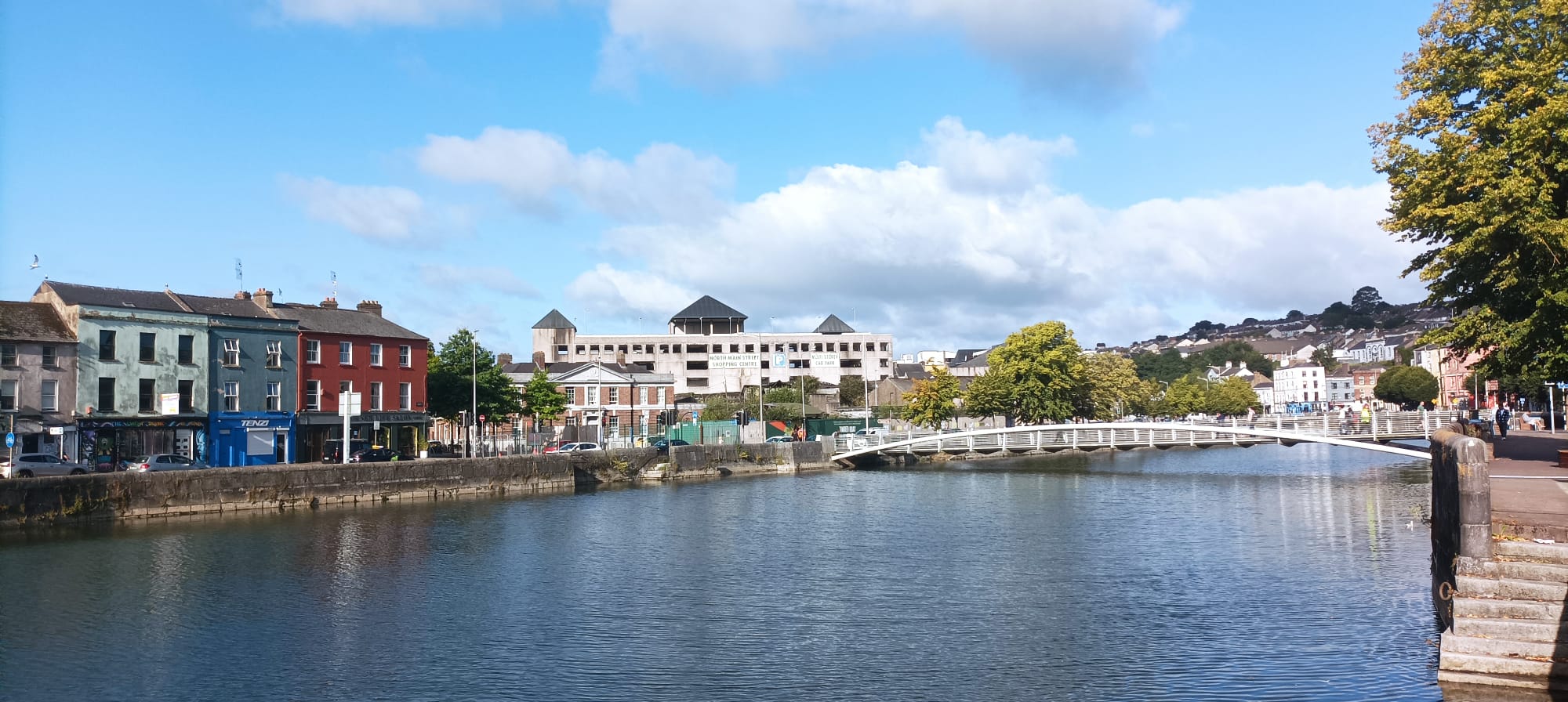
Cork City is near empty at 7am, but Bus Stop Coffee on Patrick’s Quay is open and the owner is a good match for sprightly me and it’s a good thing cos no one is here. The Olympics are still on and he’s telling me all about the Pakistani fella who won the javelin there last night, one of just six athletes representing that country. My favourite story is of the Afghan sisters who fled their country before the Taliban came back into power and they were cycling in the Road Race on Sunday, even making the early breakaway. Lanterne Rouge reckons the younger one could make it in the pro peleton. We reminisce about watching the Barcelona Olympics as kids. Yer man had tonsillitis so the family’s TV was put into his bedroom – black and white, cos they were working class – and every evening he’d fill them in on the day’s events. We end up swapping lockdown stories, with him being delighted just to get a long rest from aeons of coffee making, the sort of rest you don’t know you need until you get it. Meanwhile, I was hanging out beside Lake Tahoe in a half-price Airbnb atop a delicioso mountain. I had just begun a job in Silicon Valley, brought my dependents over on an eighteen-month J1 visa of all things, and had spent three days in the office before we were all told to Foxtror Oscar until further notice. Me and the fam sat it out for two months in miserable South Bay suburbia before hitting the peaks, and it’s the place my mam would most like to go back to after cycling 6000k across The United States. But after two months of lakeside beauty we panicked and moved home and I spent nearly four years working remotely without ever seeing my colleagues again.
21.1.1 Bell(e) views
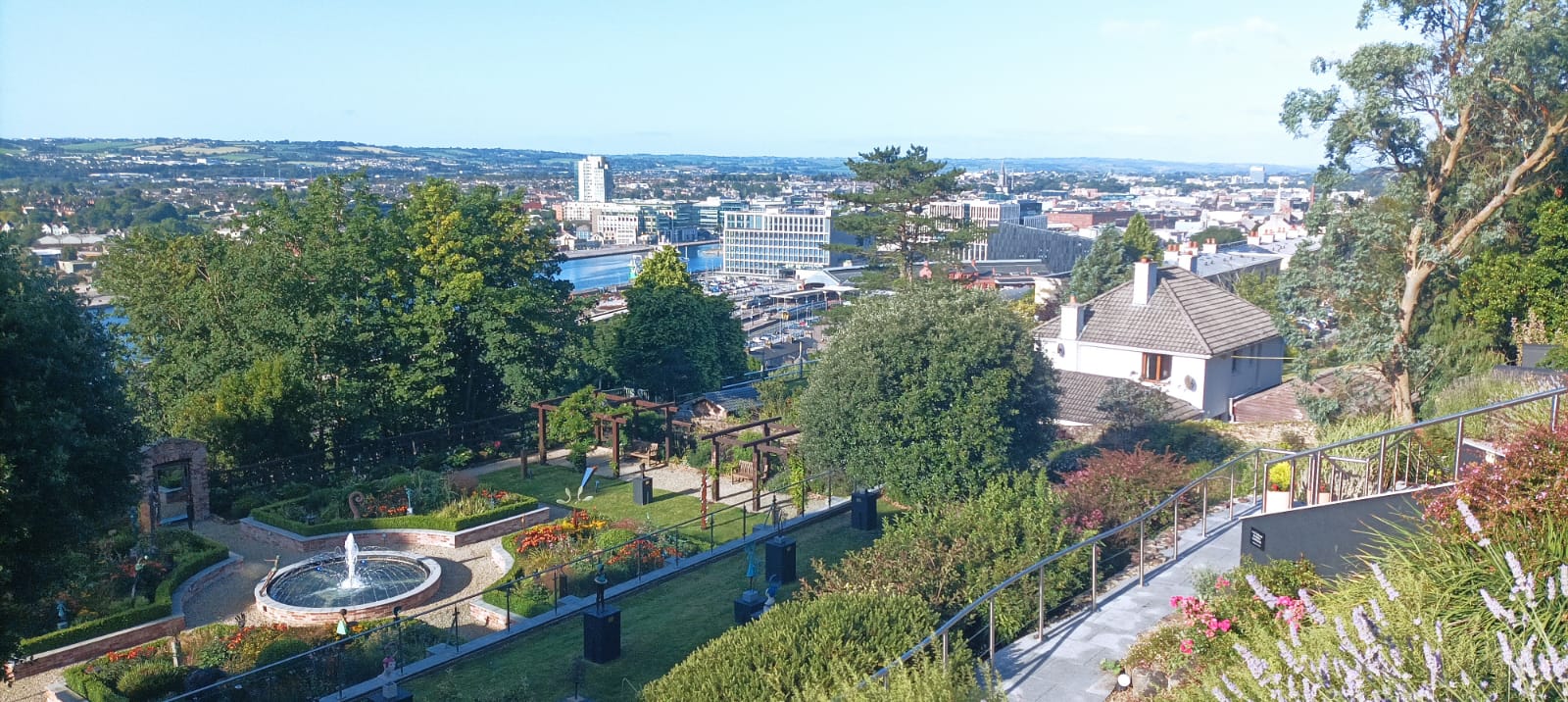
Your man finally gets some customers and it’s time for me to boost. I’m parked on the smaller North side of the city, not far from the train station, so I need to ditch the jammer, preferably for free. My private barista couldn’t think of a handy spot with free all-day parking but I ask a streetcleaner for suggestions and he racks his brains for a bit – you can actually see his head wobble as he thinks about it – and then suggests I head for Ballyvolane Shopping Centre, up the hill. There are a couple of council estates along the way where I’d be safe enough he reckons but I decide that outside Dunnes is the easiest, cos I once parked for the day outside someone’s gaff in Ballyfermot and they double parked on top of me to learn me a lesson. So I drive up the steep hill out of town, knowing I’ll regret it later when I’m knackered and park up beside Dunnes. I whip out my Falcon which is in flying form now, in case you’re asking. I put on a shorter stem which I yoinked from the bike my dad cycled across Australia in 1997, and I feel brand new on it. Soon I’m sniffing out views of the whole city from this vantage point. I see a residential road called Bellview Mews and follow my nose, then a local’s directions, to a viewing point down the back of a grassy lane where you can stand on someone’s basically wall and look out over the whole city. It’s impossible to get a snap of the city’s width, or appreciate the complexity of its interlocking waters. But I do at least get a spelling giggle as these larger, city-monitoring houses have retained the French spelling of Bellevue. So I ask a postman where I can find a better view and, a little shocked by my disappointment, he recruits a local who suggests the Montenotte Hotel. It’s a fancy modern hotel, with a couple of women my age hanging out the back of it, drinking Bloody Marys for breakfast. But the views are blocked by big fluffy trees. All the same, I do love the way you can just snoop about a hotel’s grounds for entertainment, and, if push comes to shove, you can order a coffee or a pint and just hang out. One or two euro extra for a dose of mild opulence. Or indeed free facilities. The Big Man, who didn’t hit a boozer til his early thirties, became an advocate of dropping a log in like The Westbury Hotel, while the rest of us naively contented ourselves with the likes of Bruxelles, an unlikely yet perennial hygiene leader in Dublin’s #GraftonDistrict.
21.1.2 Harbour Route
I’m starting to get a sense of what is going on and, after yet another detour up to Montenotte House, I finally have my route planned out. I’m heading out to see a ugly, spidery light on the water in Cobh, a lighthouse in name only, and, either before or after, I’ll go for a tour of Blackrock Castle near Cork City. It used to function as a lighthouse and is now an astronomical observatory, of all things. The distances are short so I can faff about and explore, but my main goal is to understand the watery complexity of the city and harbour, an enormous inland body of water, broken up by islands, passages and peninsulae, and peppered with ports of every kind. It claims to be the second largest natural harbour in the world, with Port Jackson in Sydney being the undisputed largest and a few others battling for silver. I got a sense of the harbour’s size from the East side, on my way to Roche’s Point Lighthouse, where the land is simple and contiguous. But here on the west side of the harbour, a lot more is going on. In the northwest, the city centre sits on an island, shaped like a dog’s skull, around which the River Lee splits into two channels. These recombine, widen and open up into Lough Mahon. This inland body of water is known as the Upper Harbour, and it gets squeezed through a narrow passage, before opening out at The Cove of Cork, spelt < C-O-B-H > since Ireland got its independence. The enormous lower harbour is shaped like an inverted conical flask, an upside-down triangle of water which gets squeezed through a wide passage out into the Celtic Sea slash Atlantic Ocean. It’s an unusually complex mix of land and sea and I’m assuming it’s going to merit a lot of examination.
But first off, I need to see what’s going on in this watery city, with its split river, endless bridges and these impossibly steep streets on side. I’ve been to Cork City a handful of times in my life, cricketing as a teenager, drinking in my twenties at the Jazz(less) Festival, and a couple of later trips to get my eyes and brain tested for my light sensitivity condition. But I always seem to be crossing bridges and getting lost. I’ve never spent a chunk of time here. Back in the Daniel Day, I just hit the boozer with my head down, or followed a local’s outstretched arm, rather than Google Maps, so the geography isn’t burnt into my brain. My plan is to follow the river and soak up the soothing green walkways around the Mardyke and UCC, and then I can loop back into or around the city and out the docks towards Blackrock Castle. They do guided tours every hour and it’d ruin the day to have to rush back to catch one in the late afternoon. From there I’ll head for Passage West to catch the Lee Scratch over to Cobh and thence I’ll either do a tour of Great Island and back via Fota Island, or else just double back and maybe check out out the south-west of the harbour, Ringaskiddy and Crosshaven. It’s nice to have options for a change.
21.1.3 And they’re off
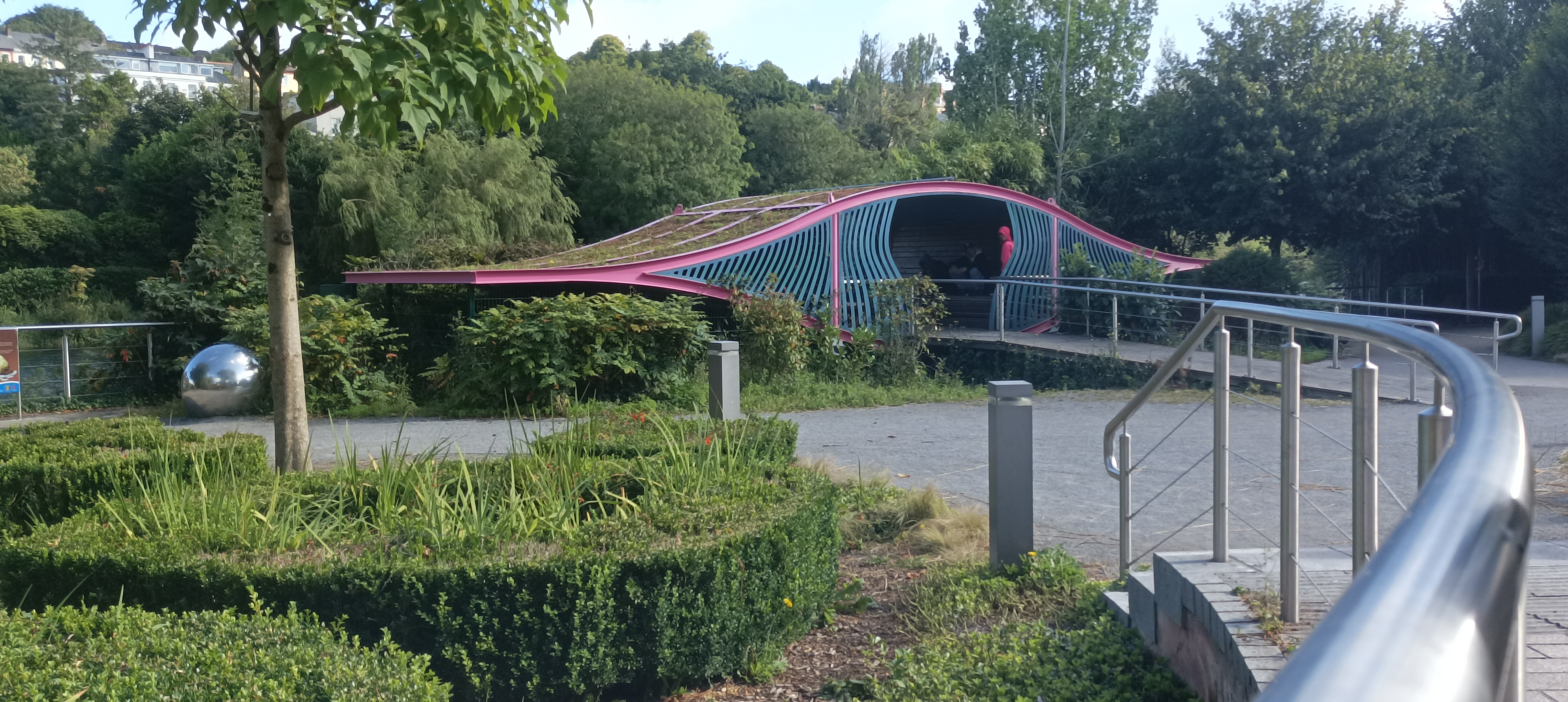
I descend back to the river and follow the bike lane along the North Quays where I see my street cleaner buddy is now yapping to my barista buddy, the two of them being the early morning face of Cork City, and I wish modern cities had more public-facing professions like theirs. The bike lane leads to the Mardyke, a beautiful mix of green campuses along the river, and my favourite memories of Cork. I nip to the cricket ground to reminisce over my time playing cricket there when I was like fifteen, with a seventeen-year-old Gary Black zipping it down. We had four slips against their petrified lower order, a real novelty for a wicketkeeper in soggy Ireland. But the best part was playing cards on the train down, the camaraderie among a bunch of competitive kids fighting over everything. Flipper really was a mad yoke and someone told me he’s a lot better now after his accident. Thank God.
I stop off in Fitzgerald Park, with its beautiful space-age hangout shelters, and I listen in as an ageing hashhead, in the most melodic of Cork City accents, dishes out nuggets of philosophy to a young stoner, along with a few anecdotes from the archives, including one about mitching from school and giving blowback to an autistic lad who ended up pissing his pants. I wonder if everyone feels the need to offload their life stories to other people or if it’s just the likes of your man and me.
21.1.4 Something to fall back on
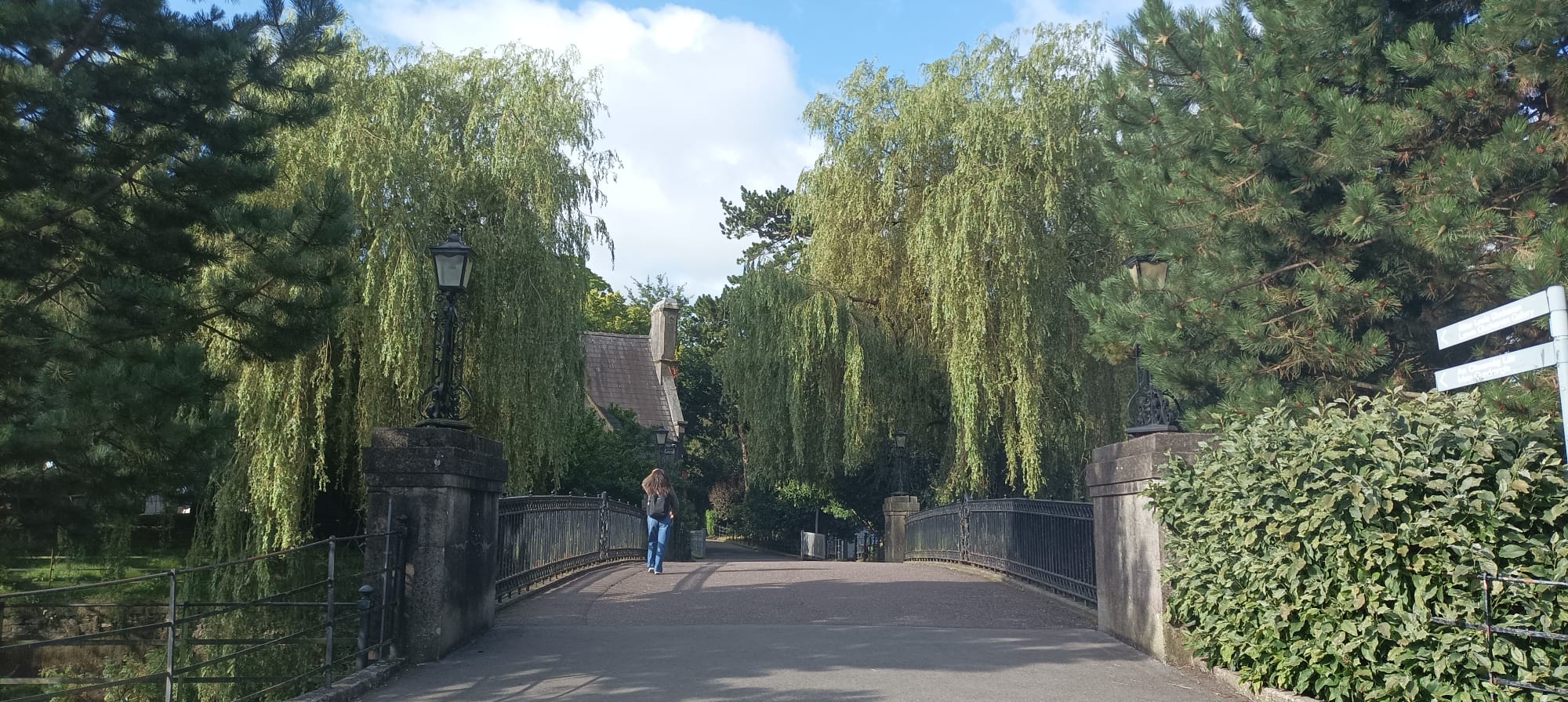
I head over to admire the calm, manicured campus of UCC where ugly buildings have been hidden behind gorgeous trees, and the tree surgeons are hard at work before the students return. Part of me laments not working in a university. I always assumed it’d be some kind of fallback job to do if the writing didn’t work out. But the writing still hasn’t worked out and neither did life as a tertiary schoolteacher. I didn’t have the stomach, after my PhD, to suffer through years of travel and uncertainty while also bringing up a young child, so I just taught English and studied to become a tech drone. Few workers are treated worse than early-career academics so you’ve gotta really want it. I loved the research and a fair chunk of the collegiality but the job seemed to either attract dull people or suck the life out of those who had any, so the professors weren’t great role models. In Trinity at least. Edinburgh was a different story. Ish. Sometimes I’d travel abroad to conferences and everyone just wanted to spew out their findings instead of collaborating and synergistically pushing forward the ideas. It got me down. Although I was permanently brassic as a postgrad and that does nothing for your mood either. The Germans would show up in a tin of fruit and cash enough to pay for the recommended hotel, while I’d be in a hostel dorm and show up in a t-shirt. It was nice to see that I had foreign colleagues who were treated with respect but you can’t be raising a family under those conditions.
21.1.5 Visual stress
Nonethenevertheless, I would have struggled to work in a university because I have trouble with sustained reading. It goes by different names – Irlen syndrome, scotopic sensitivity, visual stress – but bright lights are a pain, and so are complex patterns. And reading is basically complex patterns on a bright background, so it tires me out and makes me irritable and gives me headaches and nausea, although only professional reading contexts would push me that far. Like marking double-spaced essays for hours. In civilian life, I just stop reading after a few minutes and I lost years of intellectual growth before I discovered audiobooks. I remember years ago I was co-editing a massive book about English spelling which me and the late Vivian Cook had envisioned. I had a wad of essays to read, all printed out with possibly double spacing so I could lay into them with my red pen or maybe toxic marker. I was hanging out in Anna Hamilton’s #BigHouse up in Enniskillen for the week. She was studying for her Masters in anthropology, so we had a nice skedj going, with long walks in the morning and a Samuel Beckett festival on in the evenings. So we’d read all day and then go watch Beckett being performed in some other language, with surtitles on the side. I have never had such headaches in my life and I had to leave after every performance. The constant eye movement from stage to side-screen was just too much for my already tired brain. I felt awful for Anna who was hosting me for the week and had such a great set up for us.
Soon after, I made an appeal for help on facebook and someone told me about coloured filters. I went and found an Irlen diagnostician in Cork, and I went down with my nowwife cos she reckoned she might have it too, and she does, albeit less severely. We stayed in Shandon Bells Guest house, right here at the entrance to UCC, and we both ended up with custom-tinted lenses. The idea is that sufferers are sensitive to specific frequencies of light, aka colours, so if you put those colours into a lens, and throw in whatever normal prescription you need on top, then the problem ought to go away or at least reduce. It seems to affect a lot of people with dyslexia, ADHD and/or autism. Delicate souls who struggle with the sensory overload of our world. For me, the lenses have been transformative, and my life is immeasurably better. The world sits still and my agitation is lower. I can stare at complex patterns for a long time, like a tree with no leaves. I began to be able to write on-screen for an hour or two at a time, and later I learnt to code and could do it all day. I still can’t read like I used to, so I mostly just listen to audiobooks now, and I missed a decade of heavy reading as a result. Although coverage remains limited and if I was to stay working in tech, I’d very much like to make robot audiobooks, rather than boring-ass Siri which is no more than a butler spouting a few words. For example, I just dunzoed Dervla Murphy’s Full Tilt but couldn’t monster the rest of her work because none of it has been recorded.
I feellike a turning point was the effect of some serious concussions I got playing rugby in my early twenties, after which I never seemed to read as much as before. I remember getting kneed in the face in a ruck, came off, had a cheeky needless smoke on the sideline, came back on, and then after the game, svomeone dropped me off in James’s Hospital and left me there on my Tobler. But I defo had the condition as a kid cos I hated light in my eyes and always wanted the blind pulled down as the low evening sun came straight in to our kitchen. It’s just the severity that has been increased by the head traumas. Depending on what you include, I’ve had between ten and twenty concussions in my life, between rugby and cricket and even heading a football. That was how I made the connection between concussion and reading. I headed a football the wrong way and the aching pain in my right eye was identical to the pains I was getting from sustained reading or bright lights. Even now, working on a computer still hurts a bit. My head hurts right now, writing this in a bright, white library, even with my dark blue wraparound lenses on, and I usually have to sit in low light so as to keep my concentration. I don’t know if it’ll ever be any different. I’m getting re-tested in a couple of weeks’ time so maybe they’ll improve the lenses further.
21.1.6 Docks
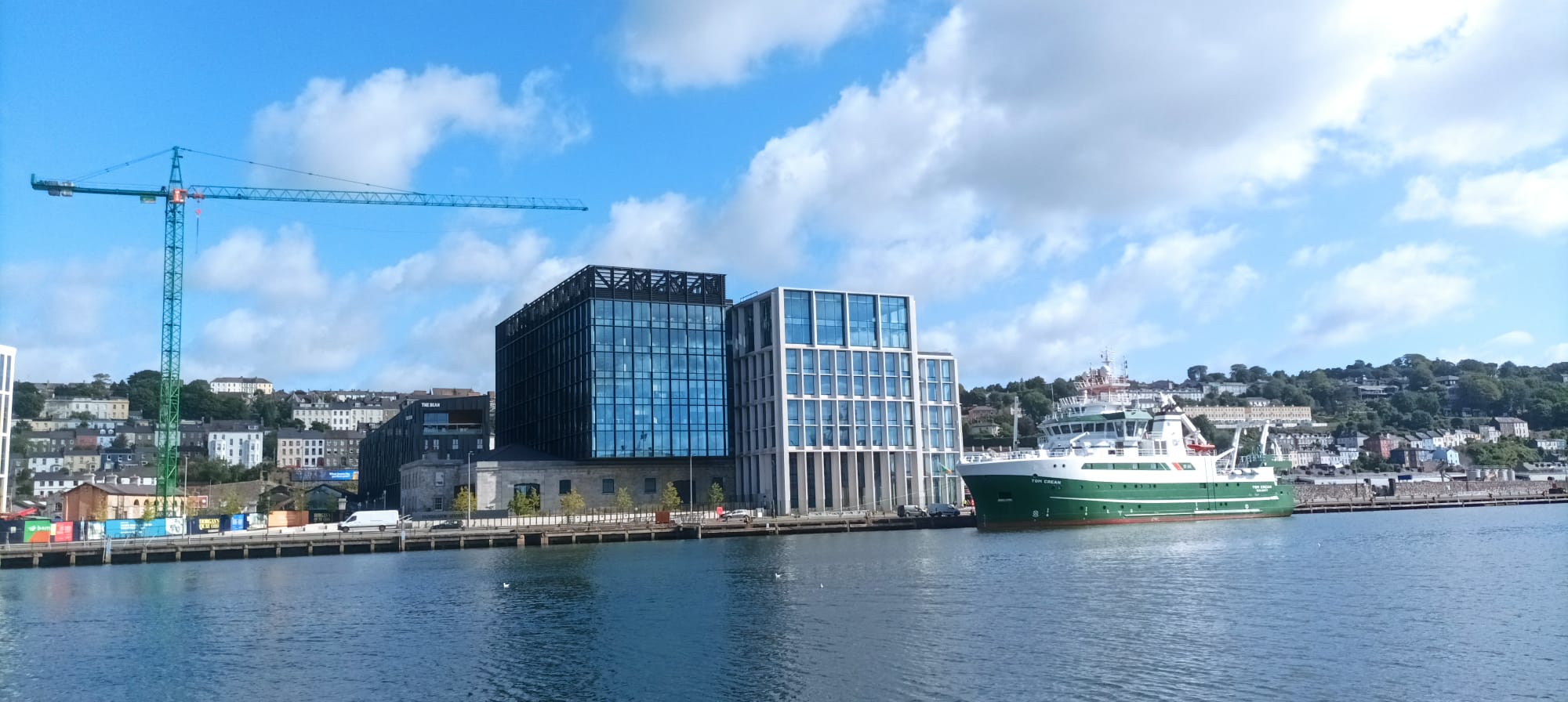
I stall it through the city centre where people loiter near a glass cafe on the wide pavement and, with this much sunshine, I feellike I could be in Central Europe. I’ve no intention of watching people scampering around, looking to get to work or buy more shoes, so I push on pronto and head out along the south quays, where the two sides of the river join back up and there is a sense again of breathable spaciousness. Modern glass buildings are scattered among the derelict warehouses. There is a nice feeling here of Rip it up and Start Again, where the city can be rebuilt; a less tragic version of what happened to the cities bombed in World War II. I soon encounter the ad hoc Marina Market with a few dozen food stalls inside a converted market building and I decide to come back this evening to see what it’s like when people fill up its tables and, wouldyabelieve, couches for the public. The river widens slowly on the way out towards Lough Mahon and alongside it is the large, partially developed Marina Park screaming watch-this-space, as it’s only been open since 2022 and is ripe for new subsections. The area is dominated by Pairc Ui Chaoimh where Cork play GAA and Munster have started playing a few rugby matches, instead of the oversized Thomond Park in their undersized base town of Limerick, a hundred bogger minutes away. There’s space aplenty to cycle through the park until I come out onto Blackrock Road and into the eponymous mature suburb.
Blackrock Castle
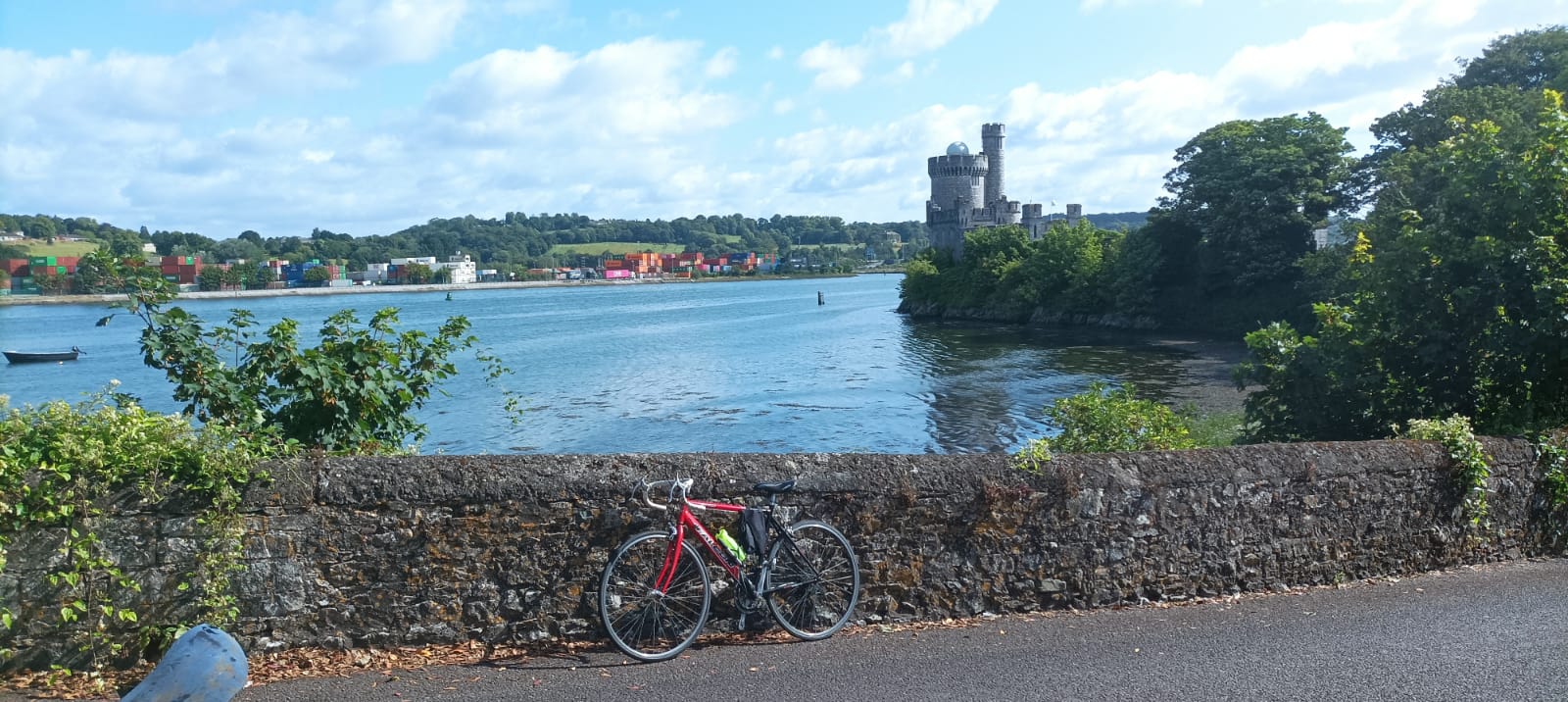
The castle sits a little beyond Blackrock, not quite on the corner of the rectangular peninsula – think Turkey flipped in the mirror – but on the tiniest protrusion out of the river bank. This allows for views around the corner, making it an ideal spot for a lookout tower and as a lighthouse guiding ships from the lough into the river. It’s half ten now so I get a ticket for the tour at eleven, leave my phone to charge in the ticket office and stall over for a coffee in what turns out to be a restaurant in love with itself. The lady outside tells me I can’t wear my cycling shoes inside, which is fairenuffski, so I tell her I’ll just take them off. Now she has to go and ask the hashtag General Manager if he can allow me in, so I stand outside and seethe a while until she comes back, all smiles, and welcomes me in. Without asking my opinion, she sits me down on a godawful middle-of-the-room seat, like an island on a lake, and then hands me a well-laid out menu. But I’ve just nailed a mango and a half block of cheese, so I only order a scone and a Yorkshire Toffee, then I blast out a ton of notes, while Hozier mimics do their best to put me off.
I’m a smidge late for the tour but it turns out to be a disappointment as the guide, a Swedish postgrad at a guess, has run out of passion for the task and blasts through her spiel, then doesn’t even open the floor for questions. It’s like we paid in just to get access to the view from the top. Plus a chance to see a framed picture on the wall of a Cork flag in outer space. It turns out that everyone – in person, in print, on video and across the Jimi Internet – has the same spiel about the castle’s remarkable range of uses dating back to 1582. It has been a signalling station. A lighthouse. A defence fortification. A gun battery. A maritime court. A place for banquets. A restaurant. A rowing club. A burnt out wreck. A ruin. A brick shithouse. And now, in the most unlikely of outcomes, an observatory. Somehow, just a few clicks from a city centre, it is dark enough for astronomers to gaze at the stars and photocopy the white-on-black sky for later analysis. Downstairs, a video shows a passionate researcher explaining her work and how the telescopes are used. My interest is whetted enough to check out their YouTube channel about the Universe and I’d love to come back again by gatecrashing a more informative school tour which seems to be their real focus. No one seems to know anything about the lighthouse which has been inactive since 1903, although Lighthouse Pete notes that it was one of a series of such lights guiding ships in and out of the river. But it doesn’t appear to have had a Fresnel Lens or any of that hashtag good stuff. I’m just glad I got to see such a beautiful and unusual building, especially given how unromantic the next lighthouse is.
21.2 The Cove of Cork
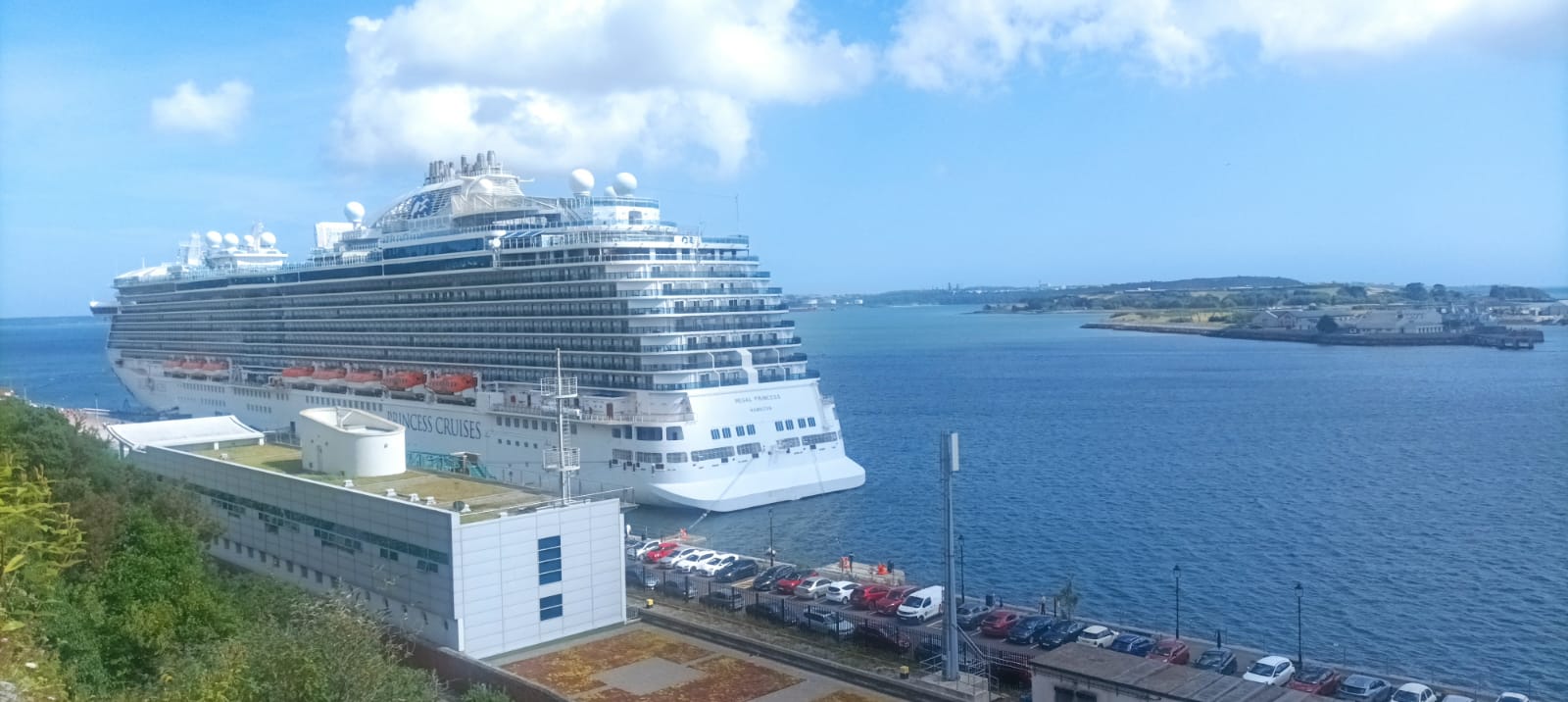
The next phase of the trip involves a small bit of actual cycling. A greenway follows the coast all the way from Blackrock to Passage West where the ferry zips back and forth to Great Island, home to Cobh. It’s good to be moving but then I have to stall on for twenty minutes as I’ve just missed the ferry. The views across the passage are fantastic and I spot a row of multi-coloured houses on high which I’ll have to add to my planned photography collection: Council Houses with a view. As I get off the ferry, some Yanks ask me where the Titanic Experience is. I didn’t know there was one and I must say it’s not an experience I myself would not like to have, although it sounds like Cobh is still cashing in on the prestige of being the doomed ship’s last port of call. I see a bunch of scaldy-ass industrial stuff sticking up to our right slash south, and I tell them it has to be that way. I follow my own guesswork directions and slowly overtake a family of four cyclists, acting out my dream holiday, albeit laden down with camping gear. For some reason, they are making no effort to use each other’s draft and ease the burden, a reminder that families are often brutal at teamwork. Round the corner, in the actual water, and big enough to block my view of the second possibly largest harbour in the world, sits a floating city, sidegridded with a thousand or more mini balconies, a handful of lifeboats, and a bunch of boat stuff on the roof. It’s a real-life Cruise Ship, which I’ve never seen this close up, and it looks like some kids got a squillion copies of the same Lego set and morphed it into a monster boat.
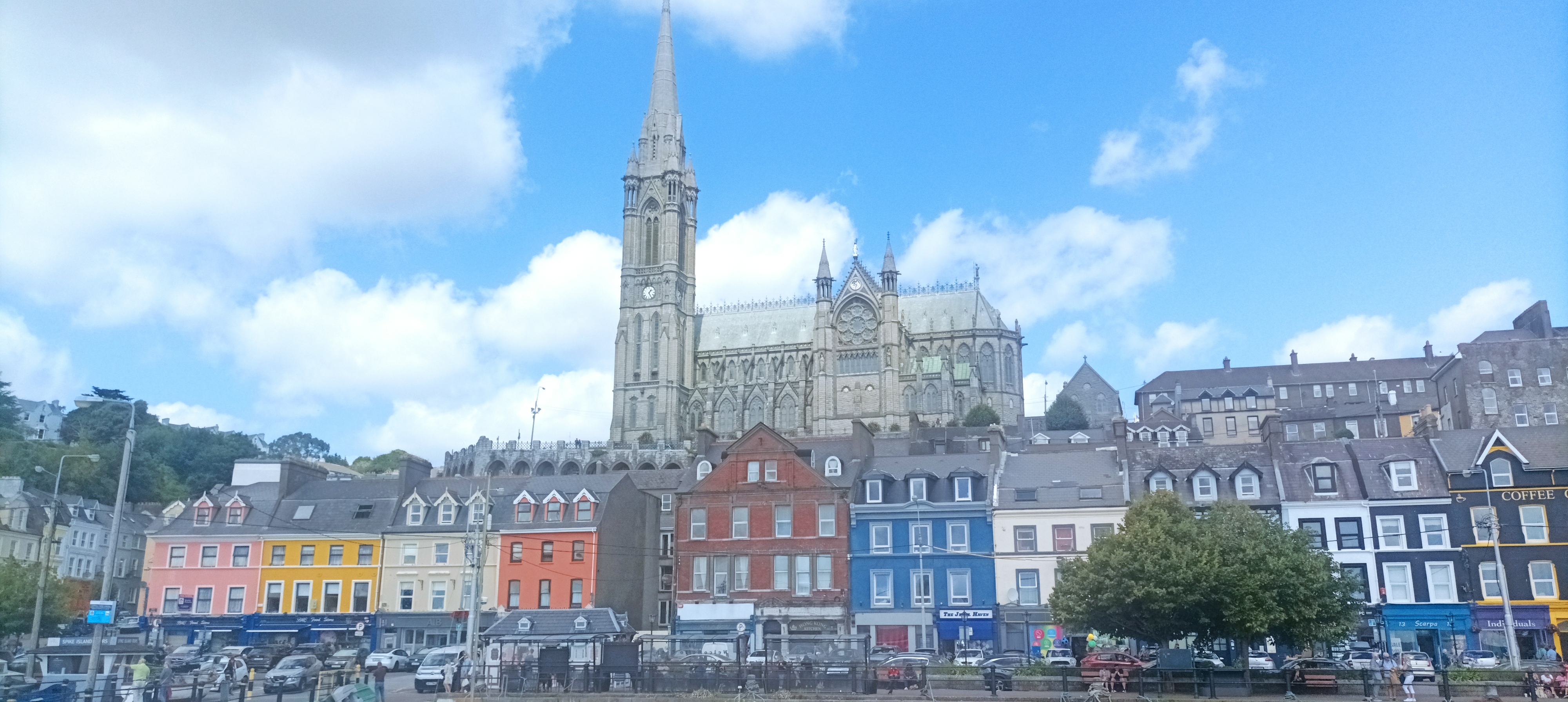
From my vantage point, I can see a procession of badly-oiled machines plod off the ship and march up to the town. Most of Cobh seems to converge at one junction, a vortex of slowmoving humans and vehicles flowing in from all sides. There is a depression in the cliffs, with the main street on the central passage coming from the north; a descent along the coast from both west and east, and up from the port to the south. I descend to this vortex to find that the locals have seen the tourists coming, and there’s a glut of boozers, restaurants and tat floggers sucking lifeblood cash from these proverbial fish out of actual water. While the tourists vary greatly by tongue and complexion, they are united by their gawking faces and the tiny gift bags they clutch. Light reflects evenly off their designer clothes which haven’t been, and may never go, through fifty-plus cycles in the Rogan Josh. I’m looking forward to asking them about their experiences, cooped up on that monster ship, but first I have to head East out of town to get closer to the lighthouse.
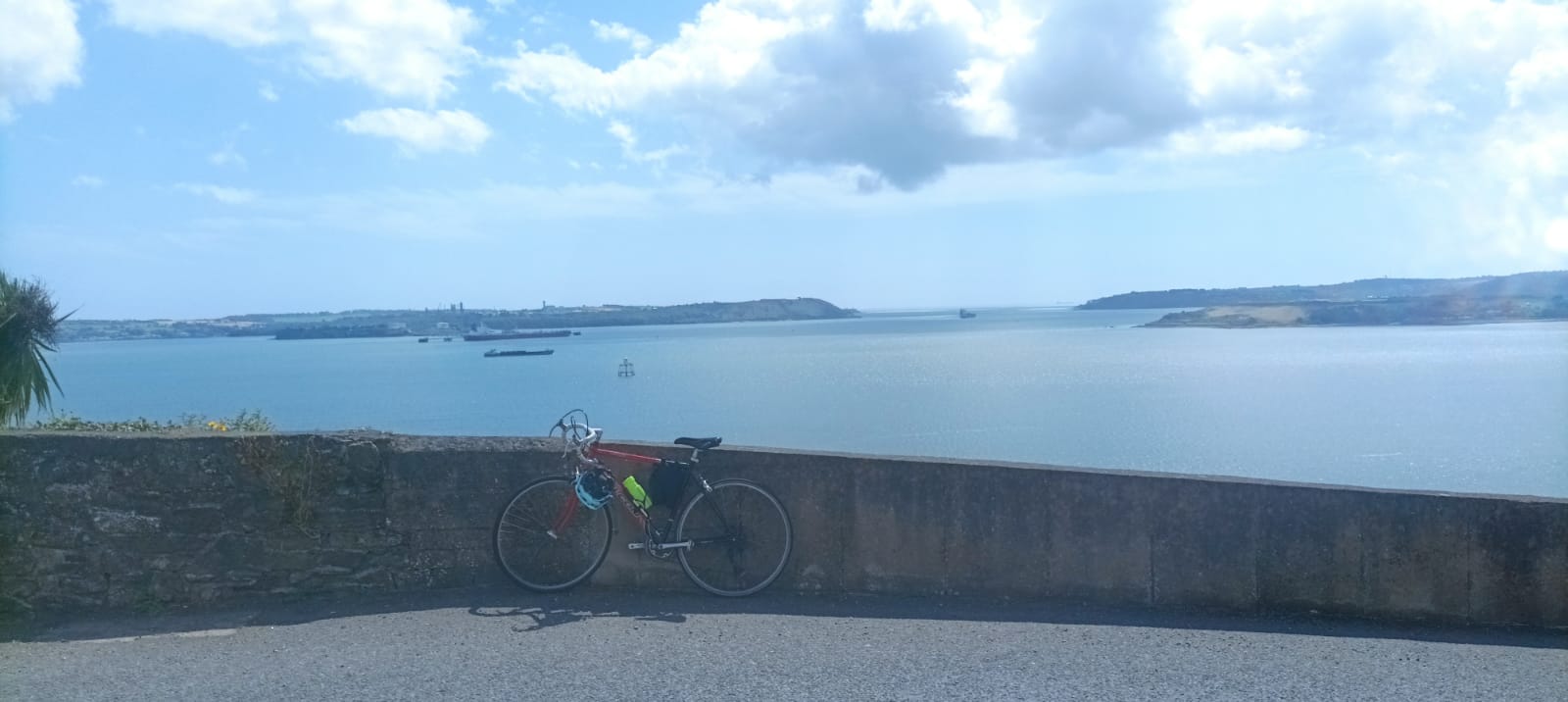
I head out of the town up the steep East Hill where there is a marginally better viewing point of the lighthouse, over 700m out at sea. There is little visible beauty in the two-tier structure, with its skinny, arachnid legs crouching in the sea and a dumpy lighthouse light atop its raised, octagonal floor. The beauty is in the security of the corkscrew design, designed by, astonishingly, a blind engineer from Belfast called Alexander Mitchell, whose screw pile design was used in 150 North American lighthouses and several more in Britain and Ireland, including the one I forgot about in Dundalk Bay, and one in Moville, Co Donegal which I am yet to see. Those two have space enough for a lighthouse keeper but the one here in Cobh does not, so the keeper would nip back and forth on the relatively calm waters of the harbour.1 The screw pile design is basically a corkscrew shape, driven into the sand bank below, preventing the light from shifting with the sands.
The expanse of Cork’s lower harbour, shaped like a conical flask, or perhaps an large ankle boot, is perfectly visible from this vantage point, and there are many locals who wake up daily to this extraordinary view, although it must seldom be this clear and calm. In the distance is a relatively narrow strait out to the ocean. The headland on the left (east) is home to Roche’s Point lighthouse but it is not visible form here. The Aghada power station is clearly visible though, with its red & white hooped tower looking well at this distance. The ‘base of the flask’ or ‘sole of the boot’ is the southern edge of rectangular Great Island, along which Cobh sits. The view of the west side (right) is dominated by two nearby islands, Haulbowline and Spike, both with curious histories, and these obscure the more complex peninsulas behind them. Ringaskiddy, where Cork’s passenger ferries dock, and Crosshaven on the strait. I’d like to see it today but probably won’t have time. Haulbowline Island used to have a steel plant and so much toxic waste was dumped off the side of the island that it has grown from sixty to eighty acres in size. That space is now a young park, but some have blamed it for Cobh having the by far the highest rates of cancer in Ireland.2 Spike Island had a fort built on it in the Napoleonic era but it was converted into a prison during to famine to house the growing number of convicts who could thence be deported to Australia or Bermuda. Mad as that might sound nowadays, the Lickety Splits were recently looking to deport their growing number of pesky refugees to Rwanda. The prison was the largest in the world and housed over 2000 inmates at times. The island became a military base again in 1883, but a big prison during the War of Independence. After the Free State was established, the island remained under British control until 1938, as one of three deep water Treaty Ports, along with Berehaven in Bantry Bay and Lough Swilly in Donegal. With all this history, and more, the island has more recently become a tourist destination, dubbed Ireland’s Alcatraz and it was considered Europe’s best tourist destination in 2017.3
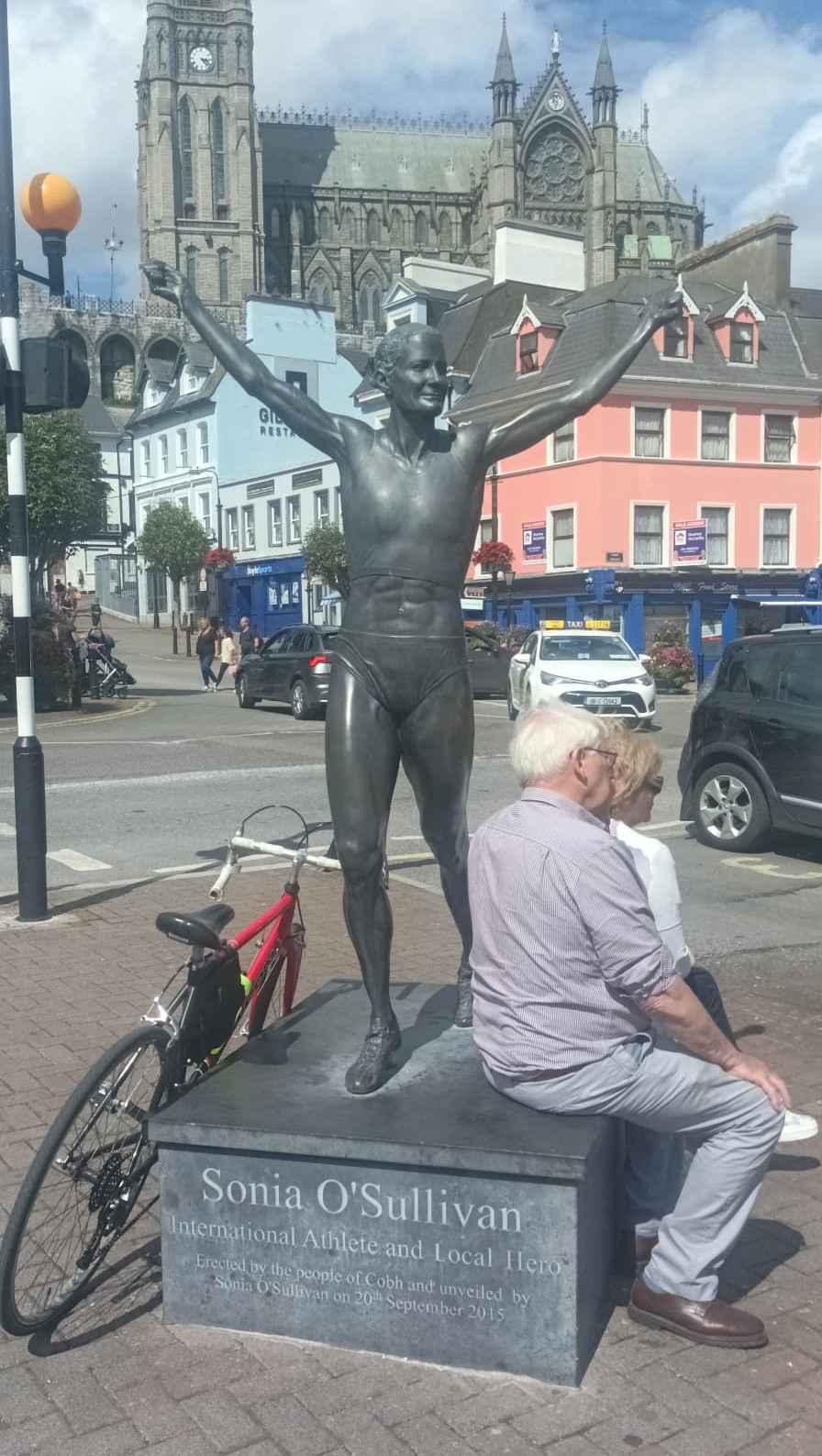
I do a quick loop around the rest of the town, which on the periphery looks like every other town in Ireland, albeit not so sprawling, and I then descend back down to St Colman’s Cathedral, to which the cruise ship tourists have ascended. In a little park across the road, a gang of uninterested harpists pluck notes for the polite, uninspired tourists who really need to be sent on a few laps of the town to get the blood moving. I’m reminded of my days as a tour guide in the Vatican, herding them about and pointing to outstanding acts of beauty. The cathedral, in it high narrowness, reminds me of John’s Lane Church on Thomas St in Dublin, and I sit down to chillax and write my notes, but I realise how thirsty I am, and how much of a thirst I have on me, so I roll back down the hill and, back in the vortical town centre. I grab a quick snap of the statue of Sonia then I nip in to Kelly’s pub for a Brit Award and a break from the sun.
21.2.1 Kelly’s
I might as a well be in Temple Bar, although the tourists are here for such a short time that many of them don’t even know they are supposed to be drinking Guinness. Or Murphy’s. Or Beamish. Or whatever you are supposed to drink here. Down the back is a posse of Ozzies with stompingly strong accents and I listen in while taking a video of a map on the wall. It shows the south-west of Ireland’s coast with all of the lighthouses flashing in what I assume is their distinctive pattern. On another wall is a map of Cork Harbour and its flashing lights. I set up camp back at the bar, with a fresh Moretti and a Dalston Dinner. That’s a bag of salted peanuts tossed over a bag of salt’n’vinegar crisps, described by Nike Segnit, one of the greatest writers of a paragraph, and worth reading even if you have no interest in food. I scribble away like an angsty teen, except I’m giggling and gesticulating away as I work out my words. Somehow, I don’t get talking to any of the cruise ship people. My first vickies are the cyclists I passed out on my way here. They’re not up for much chat, in English or French, but it turns out they’ve cycled from Rosslare and they kipped in Clonvilla campsite last night where they had their first shower in four days. I just hope they took the coast road and popped in for a few #SeaSwims along the way.
21.2.2 Fisherman Sean O’Neill from Cardigan
Eventually, a sunbattered, workmuscled young man sits down and orders a pint and a whiskey chaser. He turns out to be a real-life fisherman, fresh from his day on the water. He’s as gabby as they come and delighted to tell me every detail of his life, unlike the solitudinous types who are really out fishing for silence. I can’t quite place his Southern British accent but I’m not going to interrupt his #flow. He goes out at 3am every morning and is finished by lunchtime, delighted to have the day to himself after. They leave bait and boxes in certain locations and it’s a constant puzzle to work out where the fish are. It’s a science, really. It’s just him and the boat and its owner, and he’s chuffed to have finally found someone he gets on with as he’s his own man, and he’s been worked to the bone. He shows me the hack of his hands and tells me of the brutality some employers have put him through. Twenty-hour shifts on repeat out at sea. He’s only twenty-eight but already he’s a wreck. He’s been in Cobh for nearly a year and wants to stay. Feels at home here. He’s worked all over England and Wales but he’s from Cardigan, which is much like Ireland, and his grandfather was an O’Neill from County Antrim. He’s proud of himself for getting out of his home town, unlike everyone he grew up with. He’s wanted to be a fisherman since he was a teenager and he just went and did it, and I’m both delighted for him and inspired because all I want to be is a writer and I need to focus on that a hundy pee. I won’t be getting another life. He shows me some gorgeous snaps he’s taken from the boat and he wants to start flogging prints to the tourists. The sky. The water. The cruise ships. Printing them on canvas is the way to go, he reckons, cos the cruise ship tourists have their luggage weighed. I’m curious to know the cost of production too as I’m thinking of doing something with my own photos, although I’m worried the image quality won’t scale up. But to begin, I could print off photos of Wicklow Lighthouse for the wall in my guest room. I wish him well and ask if I should head out to Crosshaven next or do a lap of the island. He tells me to do the latter as he did it in his sea kayak recently and says it’ll look great in the sunshine. A couple of lads outside tell me to do the same, so I get back on my Paul van and hit the proverbial.
21.3 Return Leg
21.3.1 Lap of Great Island
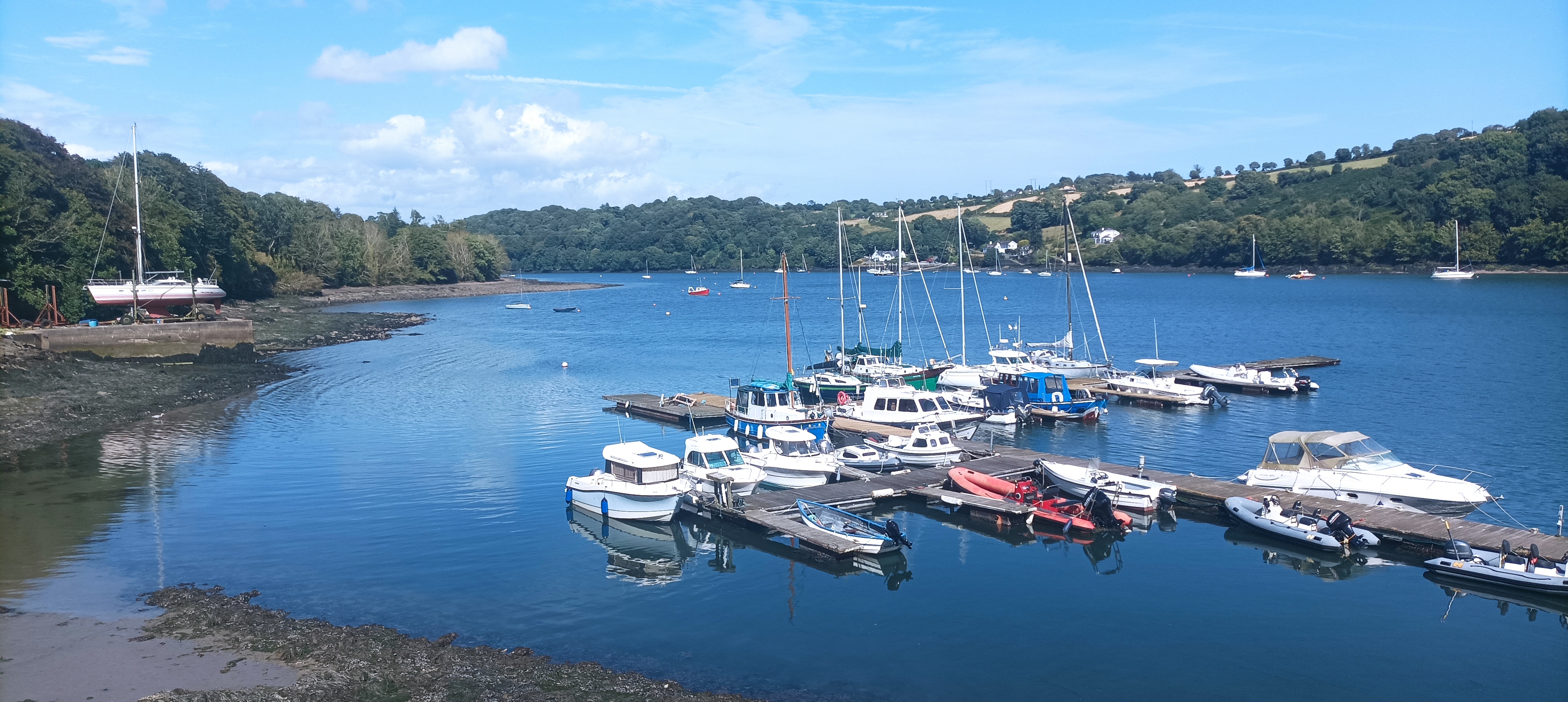
The inland waters that surround Great Island turn out to be a let down after the spectacular views across the Lower Harbour, perhaps because the tide is out and the terrain is sludgy. It’s a 20k loop around the island and the best spot I find is East Ferry Marina, which may or may not be known as the Marlogue. The entrance to the jetty is blocked by an ugly gridded gate and I get a Brendan Butchers from a smug couple heading out to their boat who are highly suspicious of my unexpected presence. A notice from the Customs Drugs Watch makes an appeal to anyone who has ‘seen or heard anything suspicious’ and I’m half wondering if I should get ahead of the narrative and report the smarmy pair before they report me as a potential bike courier.
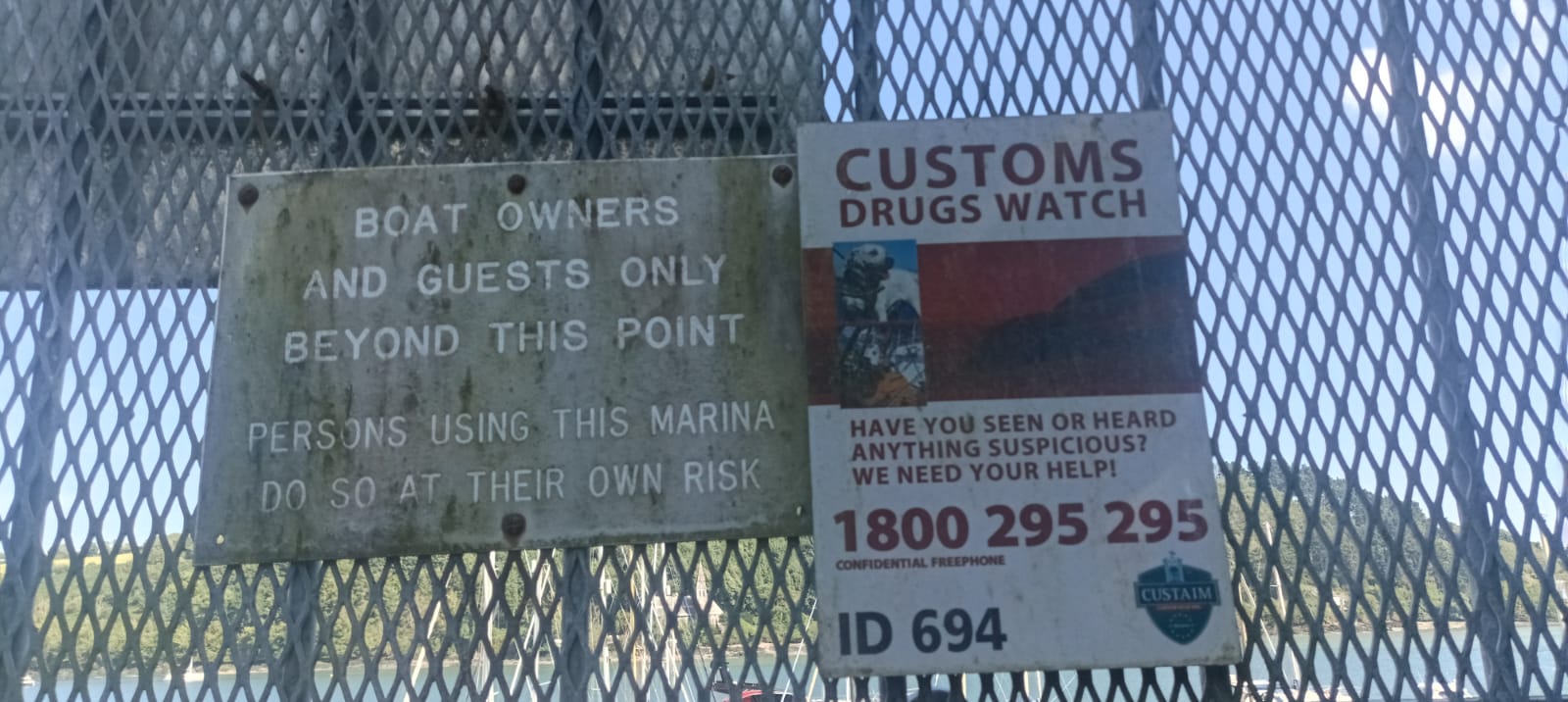
I head back along the quiet northern edge of the island where the tide is now out, increasing my disappointment, and eventually I come across a low humpback bridge at the narrow point between Great Island and Fota Island. Standing proudly nearby is Belvelly Castle, an old watchtower which has been beautifully restored by an Antrim developer called Garry Wilson who one day wants to restore a lighthouse. My brain is too full now to be checking out the recreation-heavy Fota Island, with its zoo and resort and golf course, so I peg it back to the ferry port where the driver, if that’s what they’re even called, stalls the ball for me, and minutes later I’m back in Passage West. The #greenway into Cork City is a lot busier at this hour, mostly with commuters coming against me, and it’s a bit shorter on the diagonal with Blackrock Castle cut out. This is quality urban green space and I look forward to seeing its grayth gaying forrd.
21.3.2 Marina Market
I rock up to the Marina Market where the food choices are legion, and I lounge on a couch with a Dekker Curry while wedged between two different dining groups. The family to my right have made the mistake of ordering from like five different places so the dad is up and down and everyone’s food comes at different times. It’s the sort of detail that people will need to learn about as more of these public eateries emerge. The teenage girls on my left are just lounging, maximising the use of their shared bubble tea. It’s just great to see a proper public space for people, with both a roof and fresh air. The place emerged during Covid as a semi-openair #safespace for a few vendors to flog scran and coffee, and it has grown and formalized since, although much of it remains made of wood. Despite battles over its legitimacy, much of it to do with the presence of a chemical plant next door, the council granted it five more years of trading, starting in late 2023, and long may it last. It’s a great example of bottom-up development and a welcome reprieve from the sterile dross that populates the stupidly expensive mixed-use developments, where the price of trade is too high for all but the most established chain stores, meaning that the next-generation living they promote has more in common with an airport than a close-knit community. There’s plenty of that in the pipeline. I can’t emphasize enough how important it is to have affordable eateries in our society, with space for punters to hashtag chill and mingle. Clearly they need to be rooved in Ireland, with our famous fresh air blowing through, and the Marina Market is doing all of this. It’d just be nice if they could move on from the permasesh music and maybe branch out to some, like, early Fleetwood Mac?
It’s 5k back to the car via the tail end of rush hour but my legs are still warm enough to piss up the hill and give out to a bus driver who could do with some patience training from Dublin Bus. Maybe I could do with some myself. I’m in the car before 7 to watch Rhasidat Adeleke coming fourth in the Olympic 400m, and it reminds me of a young Sonia being passed out on the inside in Barcelona. RTE do their level best to look for positives, even interviewing her a second time, but they just need to let the girl have her sadness. People say there’ll be plenty more chances but life doesn’t always work like that so you gotta take them when they come.
I piss it home on the fuel-inefficient route along the motorway but I’m way too Alan Shattered to drive across the Wicklow Mountains in the Dietmar dark. I’m delira and excira to have finished off this phase of the odyssey no one asked me to do, because the way the world is going, there could be a nuclear winter before I manage to cycle to the other seventy lighthouses on and around the telegenic island of Ireland.
https://www.buildingsofireland.ie/building-of-the-month/spitbank-lighthouse-cork-harbour-county-cork/↩︎
https://www.independent.ie/irish-news/town-in-shadow-of-toxic-dump-has-40pc-higher-cancer-rate/26803481.html↩︎
Spike Island’s lofty award might be taken with a pinch of salt. At one point in the late noughties, my mate Rossa Minogue claimed to be the number one attraction in Rome. The tour-guide company he worked for was getting rave reviews on TripAdvisor, bumping their tours above the actual attractions such as The Colosseum and Vatican Museums. And, seeing as Rossa did most of the company’s tours, he understandably took the bulk of the kudos, although the owner took the bulk of the Johnny Cash.↩︎